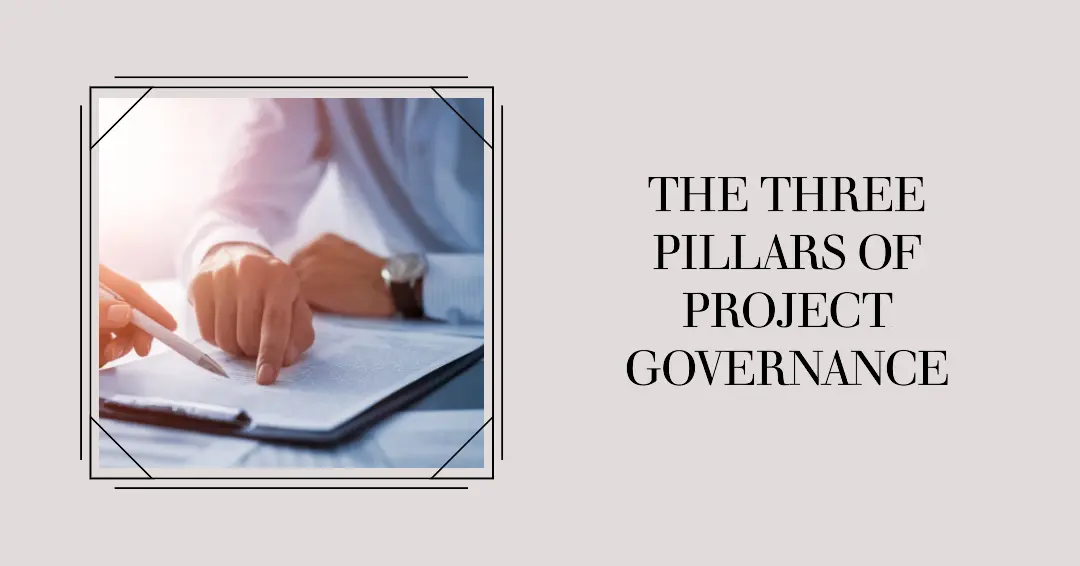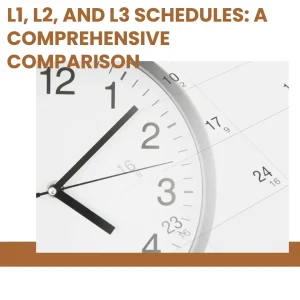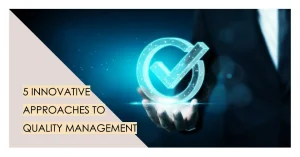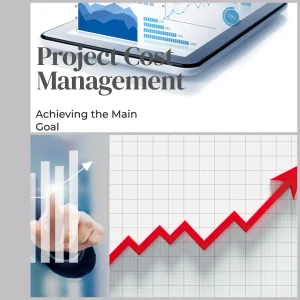I. Introduction
Hello, fellow project management enthusiasts! If you’ve ever been responsible for delivering a project on time, within budget, and meeting stakeholder expectations, you know how essential good governance is. Project governance can make or break a project, and understanding its components is key to achieving success. In today’s post, we’ll delve into the fascinating world of project governance and introduce the three foundational pillars that support it.
So, what exactly is project governance? It’s the framework of processes, principles, and practices that guide and control the management of a project. It provides the structure needed to make informed decisions and ensure alignment with organizational objectives. Think of it as the backbone of your project, ensuring everything runs smoothly and efficiently.
Now, let’s talk about the three pillars of project governance. These pillars are:
- Project Organization and Structure
- Project Management Processes and Methodologies
- Project Performance Monitoring and Control
Each of these pillars plays a critical role in ensuring the successful outcome of your projects. By understanding and implementing them in your project management approach, you’ll be setting yourself and your team up for success.
In the following sections, we’ll dive deeper into each pillar, exploring their roles, and discussing how they contribute to successful project outcomes. By the end of this comprehensive guide, you’ll have a solid understanding of project governance and how to put it into practice.
Stay tuned, and let’s embark on this project governance journey together!
II. Pillar 1: Project Organization and Structure
Welcome back, project management aficionados! In this section, we’ll explore the first pillar of project governance – Project Organization and Structure. Having a well-defined project organization and structure is like having a solid foundation for your house; it provides stability and support, ensuring everything stays in place.
A. The Role of Project Organization and Structure in Project Governance
Project organization and structure are all about defining the roles, responsibilities, and relationships among project team members and stakeholders. When everyone knows who’s responsible for what, it’s easier to coordinate efforts and ensure efficient communication. This, in turn, leads to better decision-making and increased project success. In essence, a clear project organization and structure ensure that everyone’s on the same page and working towards the same goals.
B. Key Elements of an Effective Project Organization
Let’s take a look at some of the critical components of a well-defined project organization and structure:
- Project Management Office (PMO): The PMO is the central hub for project management within an organization. It provides support, guidance, and oversight to project teams, ensuring consistency in project delivery.
- Project Sponsor: The project sponsor is the champion of the project, providing strategic direction and financial support. They play a crucial role in ensuring the project stays aligned with organizational goals and objectives.
- Project Steering Committee: Comprising senior stakeholders and decision-makers, the project steering committee is responsible for overseeing the project’s progress and making strategic decisions. Their insights and guidance help keep the project on track and ensure its success.
C. Benefits of a Well-Defined Project Organization and Structure
When you have a well-defined project organization and structure in place, you’ll enjoy several benefits, such as:
- Improved communication among team members and stakeholders
- Clear accountability and ownership of tasks
- Streamlined decision-making processes
- Better alignment with organizational goals and objectives
- Higher chances of project success
Now that we’ve covered the importance of project organization and structure, we’re ready to move on to the next pillar – Project Management Processes and Methodologies. In the upcoming section, we’ll explore the various methods and processes that ensure smooth project execution and delivery. Get ready to become a project governance pro!
III. Pillar 2: Project Management Processes and Methodologies
Hello again, project management enthusiasts! It’s time to dive into the second pillar of project governance – Project Management Processes and Methodologies. These processes and methodologies provide the roadmap for your project, ensuring that you have a clear path to follow from start to finish.
A. The Significance of Project Management Processes and Methodologies in Project Governance
Having a solid project management methodology in place is like having a reliable GPS system guiding you on a road trip. It helps you navigate the twists and turns of your project, ensuring that you reach your destination successfully. By providing a structured approach to project execution, these methodologies promote consistency, predictability, and transparency throughout the project life cycle.
B. Popular Project Management Methodologies
There are several project management methodologies available, each with its own set of principles and processes. Let’s take a look at some of the most popular ones:
- Agile: Agile is a flexible and iterative approach to project management, emphasizing collaboration, adaptability, and customer satisfaction. It’s ideal for projects with frequently changing requirements or uncertain outcomes.
- Waterfall: The Waterfall methodology is a linear and sequential approach to project management. It follows a strict, step-by-step process, making it suitable for projects with well-defined requirements and minimal scope for change.
- Scrum: Scrum is an Agile framework that focuses on delivering small, incremental improvements to a project through short, time-boxed iterations called “sprints.” It’s ideal for complex projects requiring rapid adaptation to changing circumstances.
- Kanban: Kanban is a visual project management methodology that emphasizes continuous improvement, transparency, and flow. It helps teams manage work-in-progress effectively and is suitable for projects with varying priorities.
C. Tailoring Methodologies to Specific Projects
One size doesn’t fit all when it comes to project management methodologies. It’s essential to choose the methodology that best aligns with your project’s goals, scope, and complexity. Don’t be afraid to customize or combine methodologies to create a unique approach tailored to your specific needs.
D. Benefits of Using Standardized Project Management Processes
When you adopt standardized project management processes, you’ll enjoy several benefits, such as:
- Enhanced collaboration and communication within the team
- Improved efficiency and productivity
- Reduced risks and uncertainties
- Better control over project scope, schedule, and budget
- Increased likelihood of project success
With a solid understanding of project management processes and methodologies, you’re now ready to tackle the third and final pillar of project governance – Project Performance Monitoring and Control. In the next section, we’ll discuss how to keep a watchful eye on your project’s progress and make timely adjustments to ensure success. Stay tuned, and let’s master project governance together!
IV. Pillar 3: Project Performance Monitoring and Control
Welcome back, project management heroes! We’ve reached the final pillar of project governance – Project Performance Monitoring and Control. This pillar is all about keeping a close eye on your project’s progress and making data-driven decisions to ensure its success. It’s like having a personal trainer to keep you on track and help you achieve your goals.
A. The Role of Project Performance Monitoring and Control in Project Governance
Monitoring and controlling project performance involves tracking and assessing key performance indicators (KPIs) throughout the project life cycle. By regularly measuring and evaluating your project’s progress, you can identify potential issues, make informed decisions, and implement corrective actions before things spiral out of control. In essence, project performance monitoring and control help you maintain a strong grip on your project’s direction and outcome.
B. Key Performance Indicators (KPIs) Used to Measure Project Performance
KPIs are measurable values that demonstrate how effectively a project is achieving its objectives. Here are some common KPIs used to measure project performance:
- Schedule Performance Index (SPI): Indicates how efficiently the project is progressing compared to the planned schedule.
- Cost Performance Index (CPI): Measures the project’s financial efficiency by comparing the actual costs to the planned budget.
- Quality Metrics: Assess the quality of project deliverables by tracking defects, rework, and customer satisfaction.
- Scope Changes: Monitor the number and impact of changes to the project scope to ensure it remains aligned with objectives.
C. The Importance of Regular Project Progress Reporting
Regular project progress reporting is crucial for keeping stakeholders informed and engaged. By providing timely and accurate updates, you’ll foster transparency, trust, and collaboration among team members and stakeholders. It also allows you to maintain accountability, demonstrate progress, and showcase your team’s achievements.
D. Common Project Performance Monitoring Tools and Techniques
There are several tools and techniques available to help you effectively monitor and control project performance. Here are some popular options:
- Dashboards: Visual representations of key project data, providing an at-a-glance overview of project status and progress.
- Earned Value Management (EVM): A quantitative technique that integrates scope, schedule, and cost data to assess project performance and forecast future outcomes.
- Risk Registers: Tools for tracking identified risks and their corresponding mitigation plans, helping you stay prepared for potential challenges.
- Issue Logs: Records of project issues and their resolutions, enabling you to identify trends and address problems proactively.
Now that we’ve covered the three pillars of project governance, you’re well-equipped to implement these principles in your own projects. Remember, project governance is a critical component of project success, and mastering these pillars will set you on the path to becoming a true project management superstar!
V. Implementing Project Governance in Your Organization
Congratulations, project management champions! You’ve learned about the three essential pillars of project governance. Now, it’s time to put that knowledge into action and implement project governance in your organization. In this section, we’ll discuss the steps to establish project governance and how to ensure its long-term success. So, buckle up and let’s dive in!
A. Steps to Implement Project Governance
- Assess your current state: Begin by evaluating your organization’s existing project governance practices. Identify gaps, strengths, and areas for improvement.
- Define project governance objectives: Set clear and measurable goals for your project governance initiative. These objectives should align with your organization’s overall strategic priorities.
- Establish roles and responsibilities: Clearly define the roles, responsibilities, and reporting lines within your project governance structure. This includes designating project sponsors, steering committees, and PMO functions.
- Select and customize methodologies: Choose appropriate project management methodologies for your organization and tailor them to fit your unique needs and requirements.
- Develop performance monitoring and control systems: Set up tools, processes, and KPIs to track project performance, enabling you to make data-driven decisions and adjustments.
B. Importance of Stakeholder Buy-In and Support
Stakeholder buy-in and support are critical to the success of your project governance initiative. Engage with key stakeholders early and involve them in the development and implementation of your project governance framework. This will help ensure their commitment, foster collaboration, and promote a culture of shared ownership.
C. Role of Training and Development in Establishing Project Governance
Effective project governance requires the right skills and competencies. Invest in training and development programs to equip your team members with the necessary knowledge and expertise. This will not only enhance their performance but also foster a culture of continuous learning and improvement.
D. Benefits of Continuous Improvement and Adaptation in Project Governance
Project governance is not a one-size-fits-all or a one-time effort. It requires ongoing refinement and adaptation to keep pace with changing organizational needs and project environments. Embrace a mindset of continuous improvement and be prepared to adjust your project governance practices as needed. This will help you stay agile, responsive, and effective in your project management efforts.
By following these steps and embracing a culture of project governance, you’ll set your organization on the path to consistent project success. As you continue to hone your project governance skills, you’ll not only become a project management powerhouse but also contribute to the long-term growth and success of your organization. Keep striving, and happy project managing!
VI. Conclusion
Wow, what a journey we’ve been on together, project management trailblazers! We’ve explored the fascinating world of project governance and delved into its three core pillars: Project Organization and Structure, Project Management Processes and Methodologies, and Project Performance Monitoring and Control. By now, you should have a solid understanding of these pillars and how they contribute to successful project outcomes.
To recap, remember that the three pillars of project governance are essential in:
- Establishing a clear and efficient project organization and structure
- Selecting and customizing project management methodologies that best suit your project’s needs
- Continuously monitoring and controlling project performance to ensure success
Implementing robust project governance practices is crucial for driving project success and ensuring alignment with your organization’s strategic objectives. As you apply the knowledge you’ve gained in this comprehensive guide, you’ll not only elevate your project management skills but also create a lasting positive impact on your organization.
So, go forth and conquer the world of project management! Remember, mastery of project governance is within your reach. Stay curious, keep learning, and never stop striving for excellence in your projects. Here’s to your future success, project management superheroes!
To find out how Artificial Intelligence is changing the Project Management landscape, you have enjoy reading this article https://www.shaunstoltz.com/did-artificial-intelligence-just-change-everything-about-project-management/
Find out more about Shaun Stoltz https://www.shaunstoltz.com/about/
This post was written by an AI and reviewed/edited by a human.



